I was required to write a simple implementation of Fibonacci's algorithm and then to make it faster.
Here is my initial implementation
public class Fibonacci {
public static long getFibonacciOf(long n) {
if (n== 0) {
return 0;
} else if (n == 1) {
return 1;
} else {
return getFibonacciOf(n-2) + getFibonacciOf(n-1);
}
}
public static void main(String[] args) {
Scanner scanner = new Scanner (System.in);
while (true) {
System.out.println("Enter n :");
long n = scanner.nextLong();
if (n >= 0) {
long beginTime = System.currentTimeMillis();
long fibo = getFibonacciOf(n);
long endTime = System.currentTimeMillis();
long delta = endTime - beginTime;
System.out.println("F(" + n + ") = " + fibo + " ... computed in " + delta + " milliseconds");
} else {
break;
}
}
}
}
As you can see I am using System.currentTimeMillis() to get a simple measure of the time elapsed while computed Fibonacci.
This implementation get rapidly kind of exponentially slow as you can see on the following picture

So I've got a simple optimisation idea. To put previous values in a HashMap and instead of re-computing them each time, to simply take them back from the HashMap if they exist. If they don't exist, we then put them in the HashMap.
Here is the new version of the code
public class FasterFibonacci {
private static Map<Long, Long> previousValuesHolder;
static {
previousValuesHolder = new HashMap<Long, Long>();
previousValuesHolder.put(Long.valueOf(0), Long.valueOf(0));
previousValuesHolder.put(Long.valueOf(1), Long.valueOf(1));
}
public static long getFibonacciOf(long n) {
if (n== 0) {
return 0;
} else if (n == 1) {
return 1;
} else {
if (previousValuesHolder.containsKey(Long.valueOf(n))) {
return previousValuesHolder.get(n);
} {
long newValue = getFibonacciOf(n-2) + getFibonacciOf(n-1);
previousValuesHolder.put(Long.valueOf(n), Long.valueOf(newValue));
return newValue;
}
}
}
public static void main(String[] args) {
Scanner scanner = new Scanner (System.in);
while (true) {
System.out.println("Enter n :");
long n = scanner.nextLong();
if (n >= 0) {
long beginTime = System.currentTimeMillis();
long fibo = getFibonacciOf(n);
long endTime = System.currentTimeMillis();
long delta = endTime - beginTime;
System.out.println("F(" + n + ") = " + fibo + " ... computed in " + delta + " milliseconds");
} else {
break;
}
}
}
This change makes the computing extremely fast. I computes all the values from 2 to 103 in no time at all and I get a long overflow at F(104) (Gives me F(104) = -7076989329685730859, which is wrong). I find it so fast that **I wonder if there is any mistakes in my code (Thank your checking and let me know please) **. Please take a look at the second picture:

Is my faster fibonacci's algorithm's implementation correct (It seems it is to me because it gets the same values as the first version, but since the first version was too slow I could not compute bigger values with it such as F(75))? What other way can I use to make it faster? Or is there a better way to make it faster? Also how can I compute Fibonacci for greater values (such as 150, 200) without getting a **long overflow**? Though it seems fast I would like to push it to the limits. I remember Mr Abrash saying 'The best optimiser is between your two ears', so I believe it can still be improved. Thank you for helping
[Edition Note:] Though this question adresses one of the main point in my question, you can see from above that I have additionnal issues.